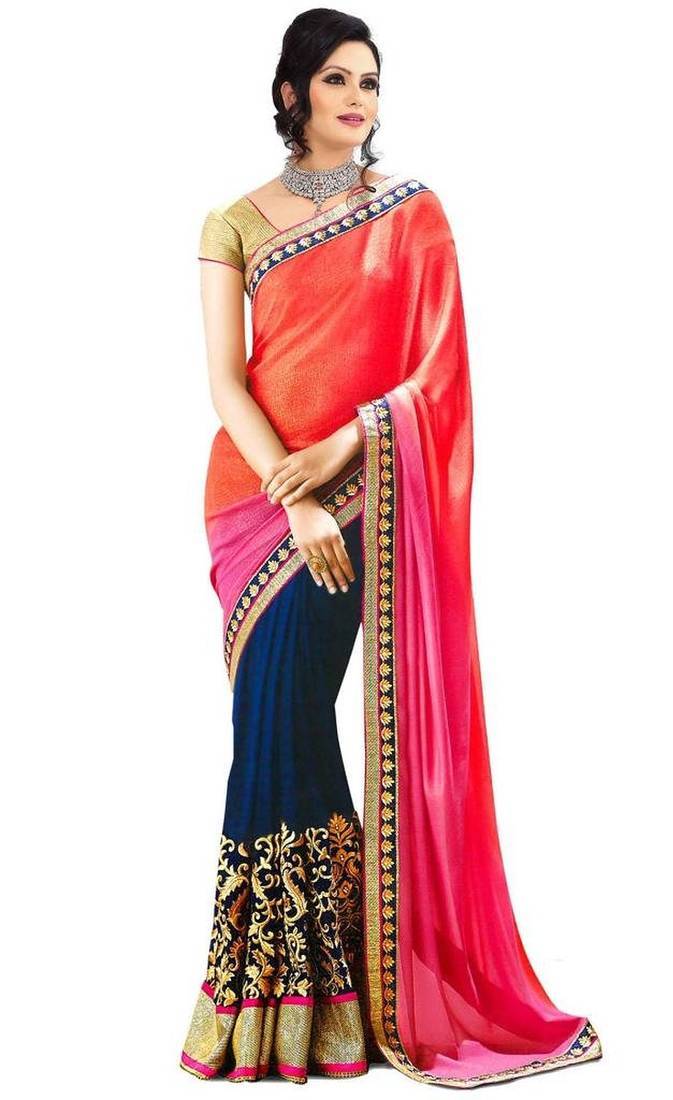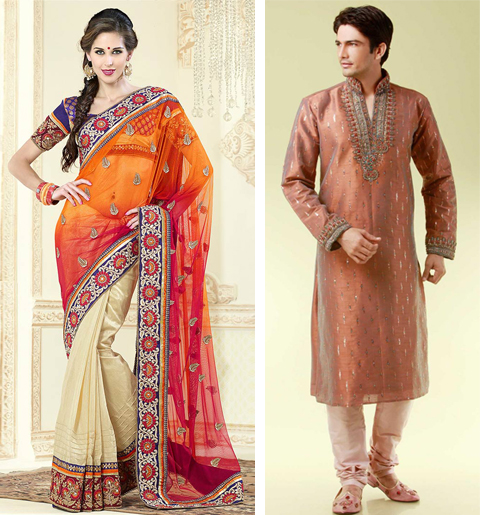Exploring the Elegance of Indian Women's Traditional Clothing
The vibrant tapestry of India's cultural heritage is beautifully reflected in its traditional clothing. The diverse styles, intricate designs, and symbolic meanings woven into each garment tell a story of history, tradition, and artistry. Among these rich traditions, the attire of Indian women holds a special place, showcasing a breathtaking array of colors, textures, and silhouettes. This exploration delves into the world of Indian women's traditional clothing, uncovering its beauty and significance.
From the flowing elegance of sarees to the comfortable grace of salwar kameez, Indian women's clothing represents a captivating blend of regional variations and cultural influences. Each region boasts its unique style and draping techniques, reflecting the distinct traditions and customs of its people. The garments often incorporate intricate embroidery, embellishments, and vibrant colors, transforming them into wearable works of art. Whether it's the regal silks of Varanasi or the vibrant bandhani of Gujarat, each piece carries a story of craftsmanship and heritage.
The significance of traditional Indian women's clothing goes beyond mere aesthetics. These garments play a crucial role in various social and cultural contexts, from weddings and festivals to religious ceremonies and everyday life. They are not only a form of self-expression but also a symbol of identity, connecting individuals to their roots and communities. The choice of attire often reflects a woman's marital status, region, and social standing, adding another layer of meaning to these beautiful garments. This article delves deeper into the heart of India's sartorial legacy.
Imagine the elaborate embroidery of a bridal lehenga, shimmering under the celebratory lights, or the simple elegance of a cotton saree worn for everyday comfort. These images capture the essence of Indian women's clothing – a seamless blend of practicality and artistry. The evolution of these garments over centuries reflects the changing social norms and cultural influences that have shaped Indian society. Understanding this historical context adds a deeper appreciation for the traditions that continue to thrive today.
Exploring the origins of Indian women's traditional clothing reveals a fascinating journey through time. From ancient draped garments to the evolution of stitched clothing, each era has left its mark on the styles we see today. Factors like climate, available materials, and cultural exchanges with other civilizations have played a significant role in shaping these garments. This exploration will delve into the historical tapestry of Indian women's attire, uncovering the influences that have shaped its evolution.
The history of Indian women's clothing is rich and varied. Early forms of attire included draped garments like the antariya and uttariya, which evolved into the modern saree. The arrival of the Mughals introduced influences like the salwar kameez and churidar, which became popular alternatives to the saree. The significance of these garments extended beyond mere fashion, reflecting social status, regional identity, and cultural values.
Different styles of sarees, like the Banarasi silk saree, Kanjeevaram silk saree, and Bandhani saree, are associated with particular regions and weaving techniques. Salwar kameez, a combination of a tunic and trousers, offers a comfortable and versatile option, with variations like the Patiala salwar and churidar. Lehengas, often worn for weddings and festivals, are known for their elaborate embroidery and embellishments.
Benefits of wearing traditional Indian attire include promoting cultural preservation, supporting local artisans, and expressing personal style. These garments often incorporate handloom weaving and embroidery techniques, providing livelihoods for skilled craftspeople. Wearing these clothes can be a way to connect with one's heritage and celebrate the richness of Indian culture.
One challenge faced by traditional Indian clothing is the competition from Western fashion trends. However, designers are innovating by incorporating contemporary elements into traditional styles, creating a fusion that appeals to a wider audience. Another challenge is the preservation of traditional weaving and embroidery techniques. Organizations are working to support artisans and promote these skills to ensure their continuity for future generations.
Advantages and Disadvantages of Traditional Indian Women's Clothing
| Advantages | Disadvantages |
|---|---|
| Cultural Preservation | Can be time-consuming to drape/wear |
| Supporting Local Artisans | May not be suitable for all occasions |
| Expressing Personal Style | Can be expensive depending on the fabric and embellishments |
Five best practices for embracing traditional Indian clothing:
1. Research different styles and find what suits you.
2. Learn proper draping techniques for sarees.
3. Choose fabrics and colors that complement your skin tone.
4. Accessorize appropriately with jewelry and footwear.
5. Support local artisans and handloom weavers.
FAQs:
1. What is a saree? A saree is a long piece of fabric draped around the body.
2. What is a salwar kameez? A salwar kameez is a tunic and trouser combination.
3. What is a lehenga? A lehenga is a long skirt worn with a blouse and dupatta.
4. What are some popular fabrics for Indian clothing? Silk, cotton, and linen are common choices.
5. Where can I buy traditional Indian clothing? You can find them in local stores or online.
6. How do I care for my Indian garments? Follow the care instructions specific to the fabric.
7. What are some appropriate accessories? Jewelry, bangles, and bindis are often worn.
8. What are some occasions to wear traditional Indian attire? Weddings, festivals, and religious ceremonies.
Tips and Tricks: Experiment with different draping styles for sarees, mix and match different pieces to create your own unique look, and explore different fabrics and embellishments.
In conclusion, the traditional clothing of Indian women is a vibrant expression of culture, history, and artistry. From the intricate embroidery of a lehenga to the flowing elegance of a saree, these garments embody a rich heritage that has been passed down through generations. Embracing these traditions not only celebrates the beauty of Indian attire but also supports local artisans and preserves cultural heritage. By understanding the significance and diversity of these garments, we can appreciate the profound connection between clothing and identity. The beauty of Indian women's traditional clothing lies not only in its aesthetic appeal but also in the stories it tells, the traditions it upholds, and the cultural heritage it represents. As we explore the diverse styles and regional variations, we gain a deeper appreciation for the artistry and craftsmanship that goes into creating these garments. By embracing and celebrating these traditions, we contribute to the preservation of a rich cultural legacy for generations to come. Take the time to explore the world of Indian women's clothing and discover the beauty that awaits.
Smurfing in spanish a deep dive into los pitufos en espanol
Unlocking the 5 bolt wheel mystery a guide to perfect fitment
Unlocking the power of ghc aesthetic covers









